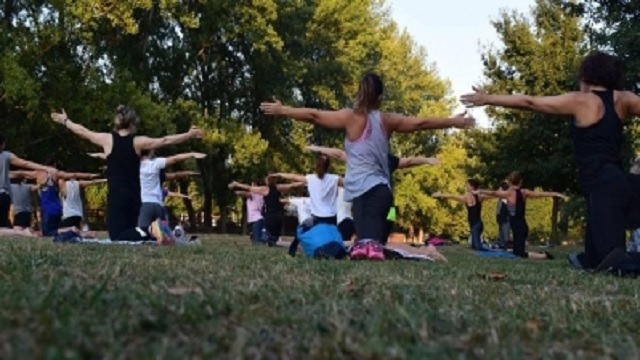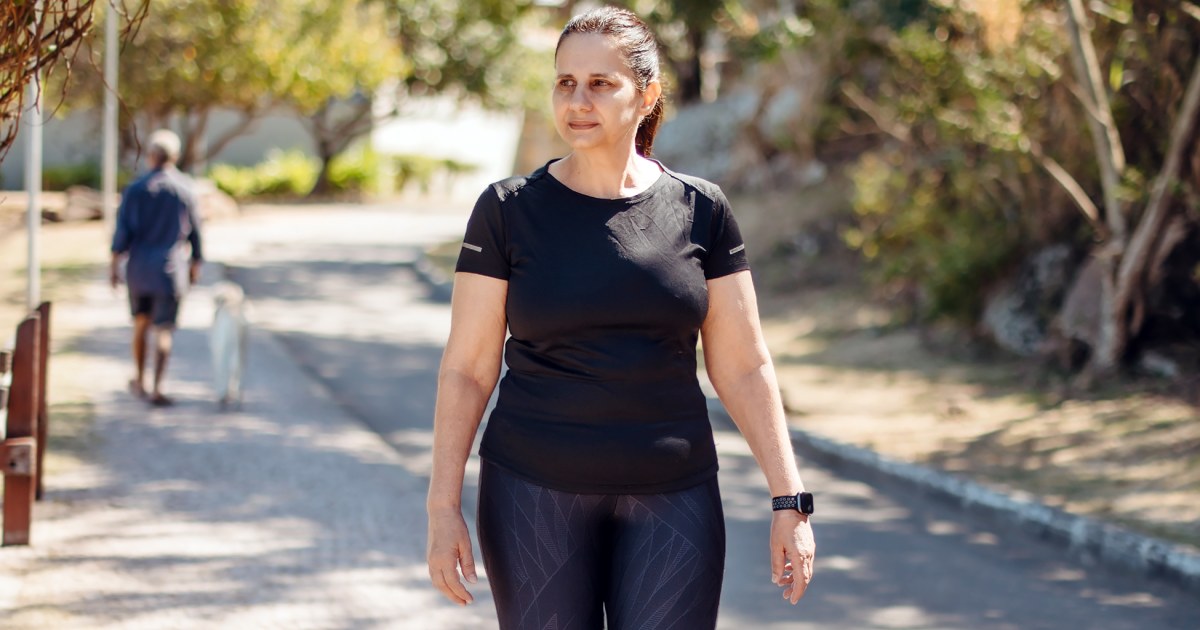But I do not have time. This is the most common excuse you hear for not getting regular physical activity. While this may be true if you have multiple jobs and are struggling to meet your basic needs, it just isn’t true for the majority of people. A 2019 study from the Centers for Disease Control and Prevention (CDC) asked a diverse sample of 32,000 Americans about the use of their time. He found that, on average, Americans have more than 4.5 hours a day of free time, the vast majority of which is spent sitting in front of screens. This result was consistent by income, age, sex and ethnicity.
Even if you insist that you are too busy to move your body because you are doing heavy and intense work, it is worth reframing physical activity not as something you do separately from your work, but rather as an integral part of it.
Why? Research shows that regular physical activity increases creative thinking and problem solving, improves mood and emotional control, improves focus and energy, and promotes quality sleep. There is no line of work that does not benefit from these attributes.
Consider a study from Stanford University that asked participants to engage in mentally strenuous tasks. One group took a break where the participants sat and stared at a wall. Another group took a six to 15 minute walk during their break. Then both groups were tested for their creative insight. Participants who took the short walk demonstrated a 40 percent increase in creative insight compared to those who did not. And this effect is not limited to adults. Other studies have shown that when young people engage in regular physical activity, their academic performance improves.
If the movement could be bottled and sold in pill form, it would be a successful trillion dollar drug, used for everything from improving performance to improving wellness to prevention and treatment of diseases.
In addition to making your brain perform better today, physical activity simultaneously helps your brain function better tomorrow. Movement promotes long-term brain development by triggering the release of a chemical called brain-derived neurotrophic factor (BDNF). BDNF is like a fertilizer for the brain. It powers a process called neurogenesis, which spawns new brain cells and makes connections between them. The link between physical activity and BDNF helps explain a growing body of evidence that regular movement prevents and delays cognitive decline. To date, there is no better prevention of neurodegenerative diseases like Alzheimer’s disease and Parkinson’s disease than regular physical activity. In short, if the movement could be bottled and sold as a pill, it would be a successful trillion dollar drug, used for everything from improving performance to improving overall well-being. through disease prevention and treatment.
It is for all these reasons that I prioritize physical activity in my coaching practice, and why I made it a pillar to keep my feet on the ground during frenetic times. Once my clients start to view physical activity as an essential part of their job, they are more likely to make it an integral part of their lives. This change in mindset gives them both the permission and the motivation to spend time moving their bodies. They go from seeing movement as something that is purely selfish to seeing it as indispensable.
Changing your mindset to see exercise as part of your job is a good start, but you still need to do it. There are two main ways to incorporate movement into your life: You can set aside protected time for physical activity such as walking, running, biking, swimming, gardening, rock climbing, dancing, gym or yoga. Or you can incorporate movement into the regular flow of your day.
At a minimum, you want to be consistent on at least one of these ways. Ideally, you will use a combination of the two. When it comes to movement, my golden rule is: Move your body often, sometimes vigorously; every bit counts.
The following practices will help you incorporate movement into your day and also learn how to get the most out of formal exercise periods.
Training: move throughout the day
That we even need to “exercise” is a recent phenomenon. Before the industrial revolution, we worked on farms. And before that, we were hunter-gatherers. If you think of the human species so far as existing 24 hours a day, it wasn’t until 11:58 p.m. that we stopped moving steadily. We would do well to get back to the basics of our species, if only in small spurts throughout the day.
For a 2016 study published in the International Journal of Behavioral Nutrition and Physical Activity, researchers at the University of Colorado and the Johnson & Johnson Human Performance Institute attempted to test the effects of various movement protocols on office workers. . Participants went to a lab where they simulated a six-hour working day under three conditions: on one visit, participants sat for a full six hours except for taking breaks in the bathroom . On another visit, participants took a 30-minute walk to start the day, then sat for five and a half hours straight (again, only getting up for bathroom breaks). In the third visit, participants walked for five minutes every hour, essentially repeating cycles of sitting and working for fifty-five minutes, then walking for five minutes.
Participants performed better on almost any measure of well-being and performance when they incorporated some kind of movement into their day, whether it was a single thirty-minute walk or six walks. of five minutes. Their mood and self-reported energy levels were higher, and their biomarkers of health were better. There were, however, some differences between the two conditions of movement. During the simulated work day that included repeated five-minute walks, participants reported greater overall satisfaction and more energy. They also reported feeling more consistently optimistic throughout the day, when the day participants did a single thirty-minute walk, their energy peaked earlier. The researchers concluded that while any move is a good move, breaking up your day with five-minute bouts was best overall.
The aforementioned studies focused on walking, but there doesn’t seem to be any reason why the same benefits aren’t true for other forms of movement, such as push-ups, squats, or yoga. Whether in bursts of two, five or ten minutes, the message is clear: movements throughout the day add up, every moment counts.
Training: get aerobic
Aerobic fitness refers to your body’s ability to use oxygen efficiently. Higher levels of aerobic fitness are associated with just about every positive outcome imaginable for physical and mental health. While it’s easy to get excited about the latest and greatest trends, from high-intensity interval training to ultramarathons, at the end of the day, regular brisk walking allows you to get there the most. , if not all the way – in shape for a long, healthy and fulfilling life. That was the conclusion of a special 2019 edition of the British Journal of Sports Medicine (BJSM) devoted to walking.
The main study in the BJSM issue interviewed over fifty thousand walkers in the UK across a variety of ages. He found that regular walking at a medium, brisk, or brisk pace was associated with a 20% reduction in all-cause mortality and a 24% reduction in the risk of dying from cardiovascular disease. Another 2019 study, published in the American Journal of Preventive Medicine, looked at nearly 140,000 men and women in the United States and found that walking briskly for at least 150 minutes per week was linked to the same reduction in 20 % of all-cause mortality.
Walking has also been compared to more strenuous forms of exercise, such as running. While experts believe running may be slightly better for you, that’s only if you run regularly and don’t injure yourself, the latter being over 50% of runners (myself included) who have had difficulties. If you enjoy and are able to stick to more intense forms of aerobic physical activity, then do them by all means. Regular running, biking, swimming, and dancing are all extremely beneficial. But don’t worry if you injure yourself frequently or if you lack the time, equipment, access, or motivation to participate in higher intensity activities. If you walk regularly over the course of your life, there is compelling evidence that it might be the only aerobic exercise you need.
Training: strength training
Contrary to what you may think, strength training isn’t just for the muscle heads in your local gym’s tank top, it’s for everyone. Some of the larger research consortia, such as the American Heart Association, recommend strength training at least twice a week, regardless of age or gender. As with aerobic movement, in addition to promoting increased muscle mass, decreased body fat, and improved range of motion, strength training also promotes good mental health and cognitive performance.
While strength training can be undertaken in a gym and involve all kinds of equipment, for many people this environment is intimidating, at least at first. The good news is, you don’t have to be a gym membership to get weight training. There are many movements that can be done with a twenty-five dollar kettlebell or anything other than your own body weight.
Taken together, these movements work all major muscle groups, use your entire range of motion, and can easily be adapted to suit different environments and levels of fitness and skill. During the COVID-19 pandemic, I – and many of my coach clients – performed variations of these movements for several months at home or outdoors in low-traffic spaces. You can do a few sets of each individually or combine them into a circuit. If you have a kettlebell or weights, you can add them if you want to increase the challenge.
- squats down
- Push ups
- Steps
- Slits
- Buttocks lift
- The wall is sitting
- Boards
- Sit-ups
- Dips
- Buckles (if you don’t have weight, you can use a full backpack)
- Burpees
This was taken from The practice of rooting, by Brad Stulberg. It is available wherever books are sold.
Stulberg (@Bstulberg) coaches on performance and well-being and writes Outside‘s Do It Better column. He is the bestselling author of Peak performance and co-founder of The Growth Equation.
[ad_2]
 AD Roberts
AD Roberts



